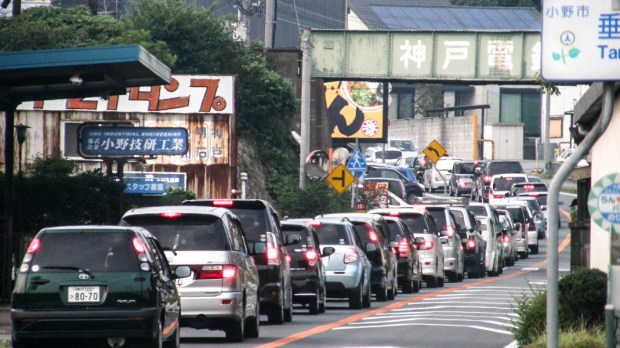Traffic fatalities have dramatically decreased in Japan due to the country’s embrace of autonomous-driving technologies, according to an article in the Wall Street Journal.
According to statistics released by Japan’s National Police Agency, in 2017 fatalities fell more than 5 percent to 3,694, the lowest since 1948 when Japan started keeping statistics.
The police agency credits the widespread use of automated braking systems and other technology that warns drivers of impending collisions and keeps them from drifting across lanes of traffic.
Automated emergency braking systems use vehicle sensors, cameras, radar, and lasers to detect imminent crashes and alert drivers before automatically engaging the brakes.
The Wall Street Journal reports that the Toyota Motor Corporation has been at the forefront of making autonomous-driving technology standard in Japan:
In August, Toyota Motor Corp. released its own research that it said showed, in the year starting December 2015, cars fitted with its Safety Sense features had 50% less rear-end collisions than cars without those features. Safety Sense is Toyota’s term for a suite of sensors that can prevent collisions by applying the brakes automatically and can also help vehicles from unintentionally drifting into another lane. More than 80% of vehicles sold in Japan by Toyota were equipped with this technology during the first 11 months of 2017.
Over half of the vehicles sold in Japan in 2016 came equipped autonomous braking systems, compared to 24 percent in Europe and only 9 percent in the U.S. As the article notes, American consumers have been reluctant to adopt the technology and its warning beeps and bells which many find “annoying.”
Annoying or not, change is on its way. In 2016, nearly all automobile makers serving the United States, pledged to make automatic emergency braking standard on vehicles by 2022.
Many would say that’s not a moment too soon, given the alarming statistics on traffic fatalities in the United States. Last year the National Safety Council released a study showing a 14 percent increase in traffic deaths over the previous two years.
Some, including consumer advocate Ralph Nader, say that traffic deaths could be reduced by other safety measures such as enforcing laws on speeding, requiring rear-seat occupants to wear seatbelts, and tightening regulations on heavy trucking, reported the New York Times.
“The way to bring down the rise in deaths is with a wide range of the nuts-and-bolts measures, not self-driving cars,” he said.

